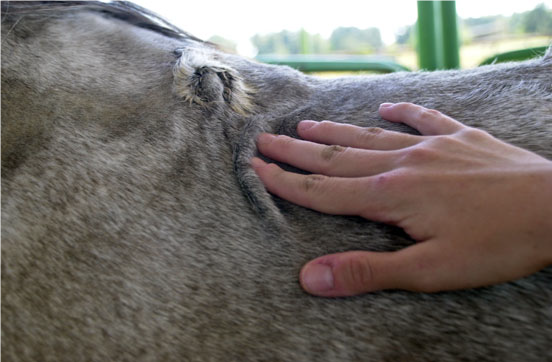
Hereditary equine regional dermal asthenia in Quarter Horses
Horses homozygous for Hereditary equine regional dermal asthenia (HERDA) appear normal at birth. However, within the first two years of like the skin becomes loose and hyper extensible and wounds occur. This results in disfiguring scars.
HERDA is a genetic mutation. In the Quarter Horse population there is a high frequency of heterozygous carries, which themselves are not affected. The American Quarter Horse Association requires DNA testing for HERDA on all breeding stallions. However, there are no restrictions on hetero- or homozygous stallions. Due to the recessive nature of the disease, breeding mares should also be tested to prevent the production of affected horses.
The study is a review of the clinical signs, genetics and research about HERDA. HERDA occurs most frequently in cutting horses with a carrier frequency of 28.3%, while in reining and western pleasure horses the frequency is around ten percent. HERDA horses are still prevalent because the performance traits of some selected HERDA carrier bloodlines are highly desirable.
Because of the popularity of certain linages, HERDA horses will continue to be produced. Managed breeding strategies based upon DNA testing of horses or embryos is currently the only method available to minimise the production of affected horses. More research needs to be performed to look for closely linked performance genes of HERDA carriers.
> From: Rashmir-Raven et al., Equine Veterinary Education 27 (2015) 604-611. All rights reserved to EVJ Ltd.. Click here for the online summary.


